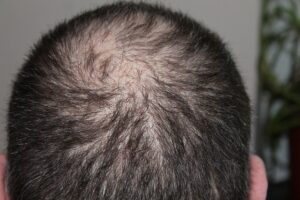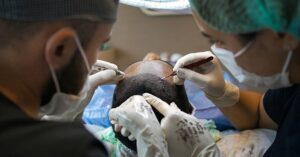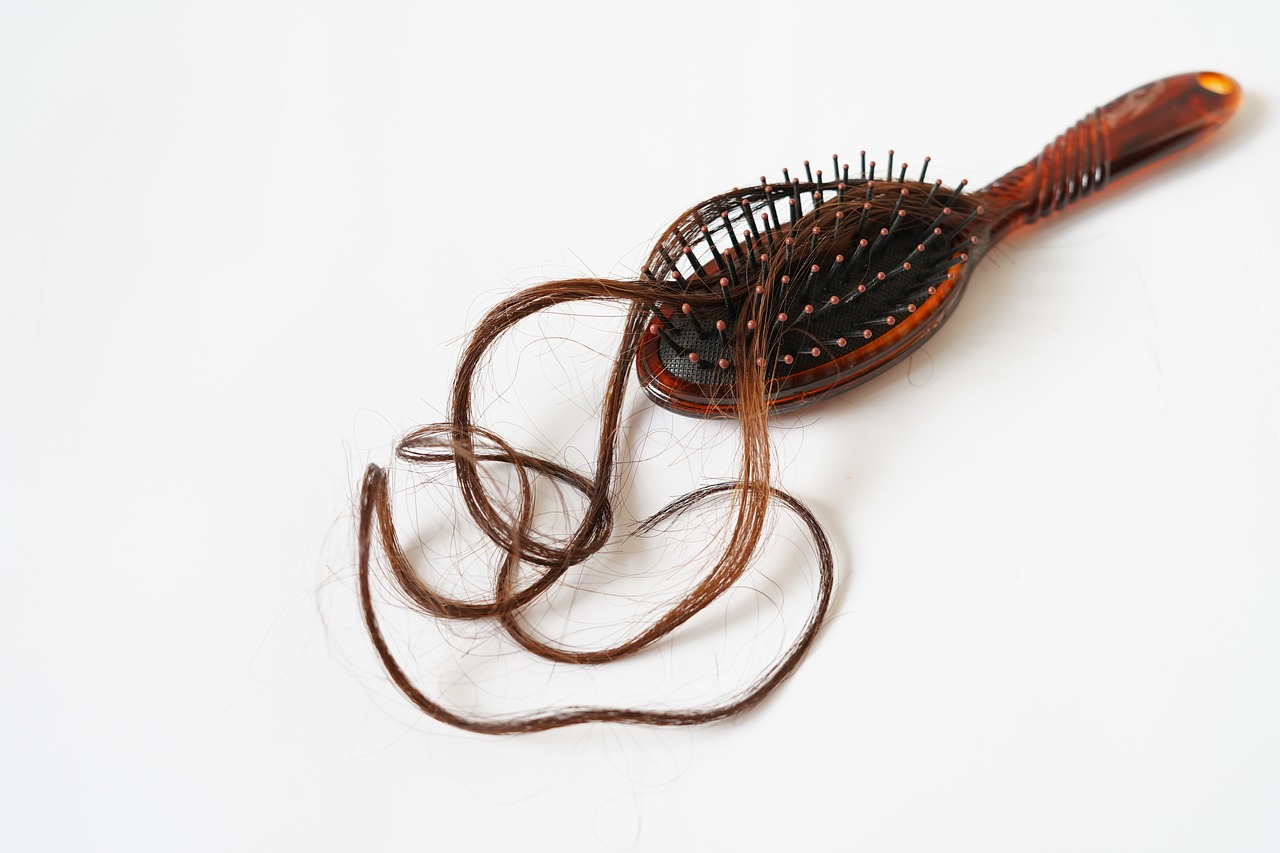Raise your hand if you’re so tired of finding clumps of hair in your brush or clogging up the shower drain. Hair loss can indeed be lots of headaches and often distressing experiences, affecting both men and women. But fear not, because you always have an option to get hair transplantation in Malaysia.
But have you ever wondered what really causes hair loss? Most importantly, what are the safest modern solutions that can help you regain your luscious locks? Today, we’ll be taking a look at the answer here. Let’s get started.
Genetic Predisposition (Androgenic Alopecia)
 Genetic predisposition, widely known as androgenic alopecia, is often considered one of the biggest causes of hair loss. If you’ve noticed a receding hairline or thinning at the crown of your head with a distinct “M” shape, chances are genetics may be playing a role in your hair woes. This type of hair loss is more prevalent in men but can affect women as well. It’s often inherited from family members, with specific genes responsible for the condition.
Genetic predisposition, widely known as androgenic alopecia, is often considered one of the biggest causes of hair loss. If you’ve noticed a receding hairline or thinning at the crown of your head with a distinct “M” shape, chances are genetics may be playing a role in your hair woes. This type of hair loss is more prevalent in men but can affect women as well. It’s often inherited from family members, with specific genes responsible for the condition.
These genes make hair follicles sensitive to dihydrotestosterone (DHT), a hormone that gradually shrinks the follicles and shortens their growth phase. From over-the-counter medications like minoxidil to prescription oral medications such as finasteride, these treatments aim to inhibit the production of DHT and promote healthier regrowth.
Hormonal Changes and Medical Conditions
Our bodies are incredibly complex, and it’s no surprise that hormonal changes can have a significant impact on our hair health. Hormones basically act as regulators for the hair growth cycle, so any imbalances or changes can lead to excessive shedding or even hair loss. One common cause of hormonal hair loss is pregnancy. During pregnancy, hormone levels fluctuate dramatically, often resulting in thicker, more luscious locks for expectant mothers. However, after giving birth, these hormones normalize and can cause an alarming amount of postpartum shedding. Certain medical conditions like alopecia areata—an autoimmune disorder where the immune system attacks healthy hair follicles—can also lead to sudden and unpredictable hair loss. In addition to this condition, other underlying medical issues, such as scalp infections or nutritional deficiencies, may contribute to thinning or brittle strands.
Modern Solution: Hair Transplant Procedures
 Luckily, modern advancements in technology have provided us with effective solutions to combat hair loss. One such solution is hair transplant procedures. Hair transplant procedures involve the surgical extraction of healthy hair follicles from one specific area of the body, typically the back or sides of the head, and grafting them onto areas experiencing thinning or baldness. This process allows for new hair growth in those areas. The technique used in hair transplant procedures has greatly evolved over the years. Previously, it involved large grafts that often resulted in an unnatural appearance. However, with advancements like Follicular Unit Extraction (FUE) and Follicular Unit Transplantation (FUT), more precise and natural-looking results can now be achieved. Both techniques offer their own set of benefits depending on individual needs and preferences. Some may prefer FUE for its minimal scarring, while others may opt for FUT due to its ability to yield a higher number of grafts in a single session. Note that although hair transplant procedures are generally safe and successful, they require careful consideration by qualified professionals who will assess your suitability as a candidate based on factors such as age, overall health, the extent of baldness or thinning, etc.
Luckily, modern advancements in technology have provided us with effective solutions to combat hair loss. One such solution is hair transplant procedures. Hair transplant procedures involve the surgical extraction of healthy hair follicles from one specific area of the body, typically the back or sides of the head, and grafting them onto areas experiencing thinning or baldness. This process allows for new hair growth in those areas. The technique used in hair transplant procedures has greatly evolved over the years. Previously, it involved large grafts that often resulted in an unnatural appearance. However, with advancements like Follicular Unit Extraction (FUE) and Follicular Unit Transplantation (FUT), more precise and natural-looking results can now be achieved. Both techniques offer their own set of benefits depending on individual needs and preferences. Some may prefer FUE for its minimal scarring, while others may opt for FUT due to its ability to yield a higher number of grafts in a single session. Note that although hair transplant procedures are generally safe and successful, they require careful consideration by qualified professionals who will assess your suitability as a candidate based on factors such as age, overall health, the extent of baldness or thinning, etc.
The Bottom Line
Whether it is due to genetic predisposition, hormonal changes, or underlying medical conditions, the impact on self-esteem and confidence can be significant. However, modern advancements in hair restoration techniques offer hope and solutions for those struggling with hair loss. Hair transplant procedures have revolutionized the field of hair restoration by providing natural-looking, long-lasting results. But other than that, there is also scalp micropigmentation which involves tattooing tiny pigments onto the scalp to 100% mimic the appearance of real hair follicles. This non-invasive procedure provides an effective way to create the illusion of a full head of shaved or closely cropped hair.

